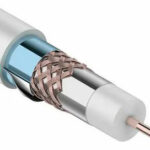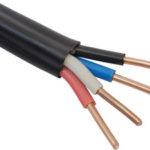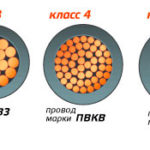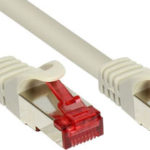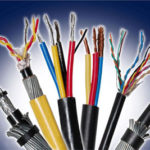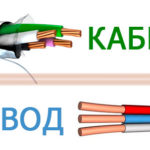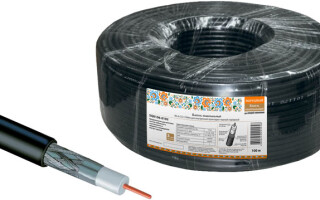Coaxial (TV) cable is the link between the antenna and the TV. On its quality depends on the power of the signal and its purity. In order to choose the right coaxial device, you need to know what kinds of television cables exist, be able to read the markings on the outer sheath and visually distinguish the good product from the fake.
Marking
The structure of coaxial cable is the same for all types of connected devices receiving information, whether it is a satellite dish or the simplest device transmitting an analog signal. An antenna cable for a television consists of:
- Internal aluminum or copper wire. Its cross section determines the range of signal transmission.
- A dielectric protective film of polyethylene or PVC. Its purpose is to protect the center rod from contact with the outer grounding conductor.
- A metallic layer (aluminum foil, steel wire, foil layer, or copper braid). It protects the rod from external electromagnetic influences, thereby ensuring high signal quality.
- External protective sheath.
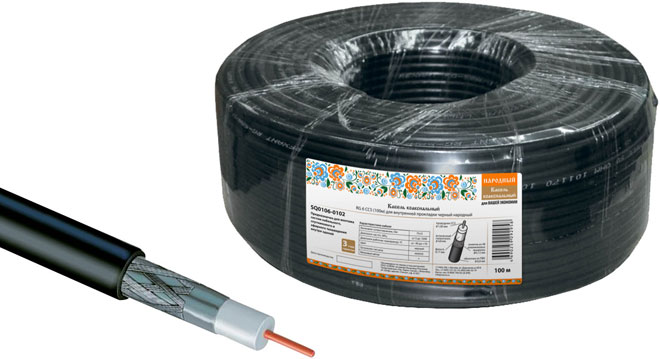
Properties of the layers may differ, so you need to know how to read the marking, coaxial cable what type and purpose is offered by the manufacturer. There are 2 ways of marking - domestic and European. In the first case, everything is simple:
- The letters "RK", standing in the first place, are deciphered as radio frequency cable.
- They are followed immediately by a numerical index indicating the resistance rating. The higher it is, the cleaner the signal will be.
- The next number is the diameter of the center channel. Immediately after it comes the designation of insulation heat resistance and the serial number of the development.
- The marking line is completed with a reference to the TU, in accordance with which the antenna cable was manufactured.
The marking according to the western standards differs a little and includes much more characteristics:
- First, the name of the manufacturer's company is written.
- Then follows the type of cable (RG, DG, SAT).
- English letters following it indicate the conductor and braid material.
- They are followed by a numerical value for the thickness of the central core.
- Two numbers written with an asterisk show information about the thickness and density of the metal braid.
- The type of protective sheath and cable resistance are obligatory.
- At the end of the alphanumeric designation of the certificate of conformity (ISO).
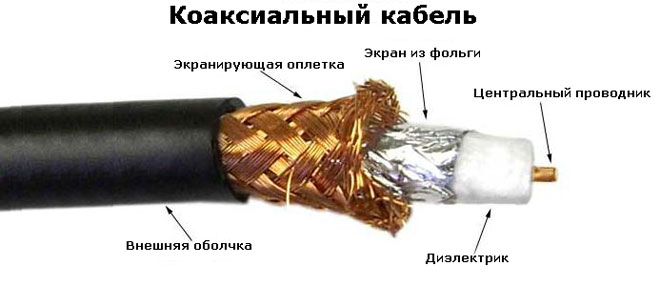
Choosing a quality cable
Before selecting an antenna cable, you should analyze the type of receiving device and the number of TVs, measure the length and determine the location of the product, pay attention to the presence of mechanical influences. After that, you can proceed to the selection of the required characteristics.
Outer sheath strength
The outer layer of protection can have different properties, which depends on the areas of application. So, for pulling cables indoors PVC-coating is enough, but for outdoor use requires a stronger sheath. Such can be protection of light-stabilized polyethylene with additional equipping of gel-like layer that protects construction from moisture penetration.
You can check the quality of the sheath by stretching and bending the cable. In the cut you can clearly see the thickness of the coating and the presence of additional layers.
Quality of the shielding layer
The choice of braid should be made responsibly (the shielding factor can be indicated in the marking line before the "%" sign). It will protect the conductor from external electromagnetic radiation and will not allow the signal to pass outside.
The most reliable cables in this regard are those with this layer glued to the dielectric. During bending of the product the braid is not shifted, an integral screen is formed.
Braid density
As a protective screen most often used foil, braided copper or aluminum wire with a cross section of 0.12 mm, wound around the dielectric in a spiral.
Its quality is evaluated by the density of the threads and the frequency of their passage. The mesh must be dense and firmly held in place to produce a quality signal.
Checking the Dielectric
In all models of television cable, the dielectric, which insulates the protective shield from the conductor, plays a major role. Its quality largely determines the service life of the signal line.
It is not possible to visually determine how well it is made, but it is recommended to check its density and the strength of its bonding with the metal layers.
Coax Grade
The class of cable depends on the internal insulation that prevents signal dispersion and the effects of external interference, i.e., the density of the braid and the presence of additional shields. According to the type of coaxial products are:
- with braid and foil shield;
- with alternate arrangement of the screen, then the braid and then foil again;
- With 4 layers - braid / foil / braid / foil.
To check the class of the model, you need to carefully remove the protective sheath and peel the screen.
Core type and thickness
The material of the core and its thickness determines the speed of signal transmission and the resistance of the television cable. The core can be copper or copper-plated.
The first type has the most appropriate characteristics. The larger the cross-section, the greater the conductive surface area. This type of cable has a high cost, so some manufacturers use aluminum coated with a thin layer of copper in order to reduce costs.
It is easy to check the core: if the core is soft and does not change color when scraping, then the central core is copper, if the wire is rigid and silver in the cut - the conductor is copper-plated.
Purpose of the cable
Since the advent of satellite and digital television with high quality transmitted signal users are faced with the problem of fuzzy and blurry picture, ripples and other interference. Sometimes some channels are not displayed.
This can be caused by an unsuitable, outdated line. In this case, the question of which TV cable is better to choose, to ensure the technological requirements, to determine the brand and characteristics.
If possible, you should pay attention to the designation on the scheme of laying electrical and radio transmission lines. Perhaps there is the exact data on the products used.
For digital and cable TV
The frequency of digital and cable TV signal transmission is within the range of 49-800 MHz, so there are no special requirements for the cable. Especially if the length of the entire line will not exceed 30 m. To ensure a quality picture you can pick up any, even the most budget models SAT, DG or RK.
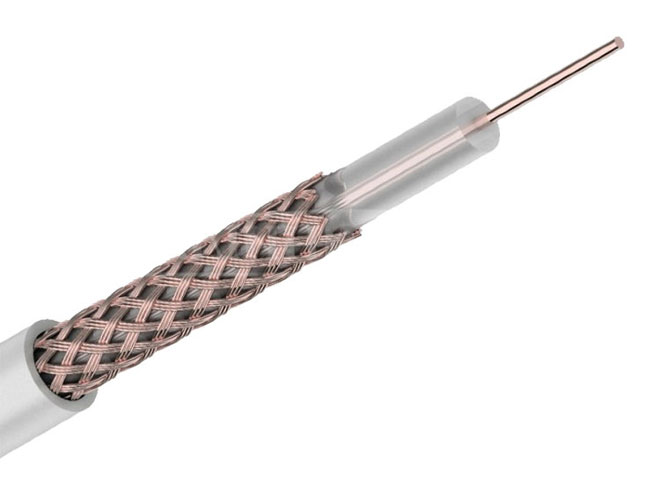
For the satellite dish
Satellite signal transmission is measured in thousands of megahertz. What is the best conductor to use for satellite TV - a question of paramount importance, otherwise instead of the expected clear picture you can get a black screen and the inscription of no signal. The core should always be copper and with the largest possible cross-section.
You should also take into account the sensitivity of the satellite transmission to various radio interference, so the protective screen must be of the highest class.
Another important factor is the location of the dish on the street, which indicates the constant impact of the environment (wind, precipitation, temperature differences). For this reason, special requirements are put forward for the upper shell and the presence of carbon protection, otherwise there is a great risk of cracks and fractures through which water can enter.
For indoor installation
A cable that runs inside a building must have high transmission and reflection capabilities. The strength of the protective sheath does not play a special role. In this case, the budget model of the conductor will perfectly cope with the task.
For outdoor installation
If the laying of television cable involves outdoor installation of some sections or long-term structures, the strength of the product, the ability to withstand the effects of the external environment and ultraviolet radiation comes first.
The highest quality, able to last the maximum number of years is a special cable equipped with a bearing steel core. Due to the high cost of such a conductor, some craftsmen prefer to choose a durable protective coating, and strengthen the line with supporting wire structures.
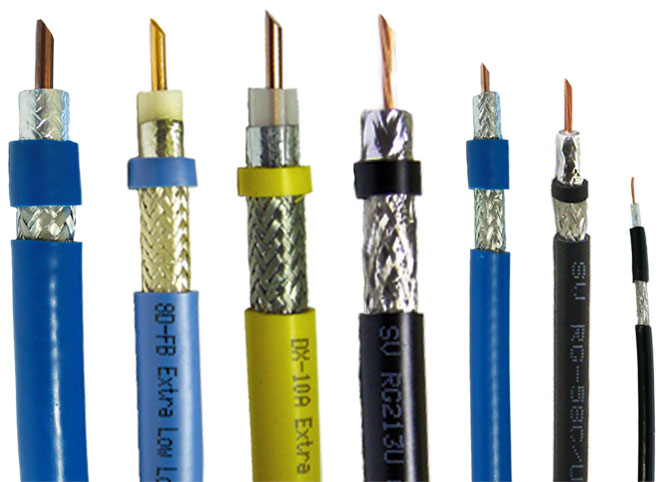
Overview of popular models
In order to decide which cable to choose, many people carefully study television cables, their varieties, properties and performance characteristics. Do not forget about the manufacturer. There are many different manufacturers of coaxial cable on the market at the moment, but their quality varies. One of the proven manufacturers is the Italian cable factory CAVEL, operating since 1968.
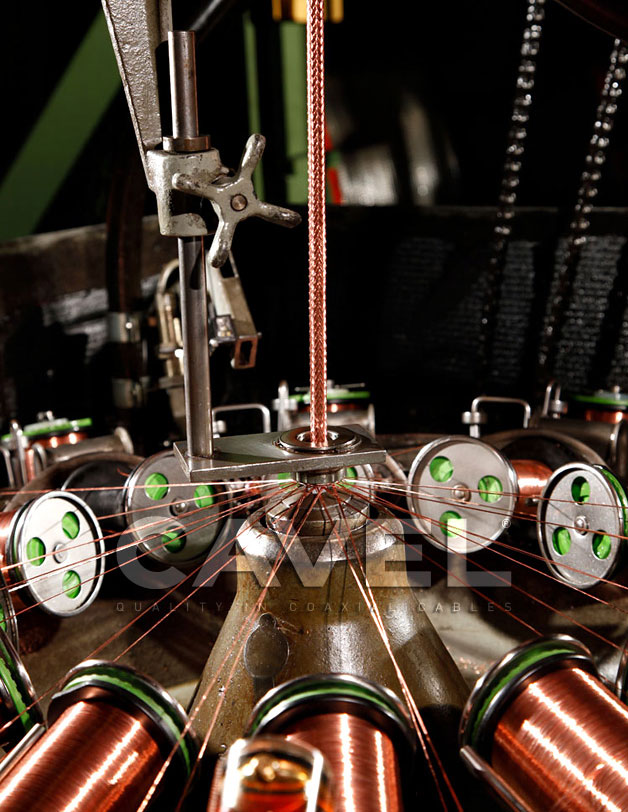
Consider a review of the most suitable models of television conductors:
- RG-6U is the most popular product, thanks to its affordable price and high performance. It is massively used to replace old lines. The central core is made of copper. As a shield, aluminum tape is wound. The only significant disadvantage is the fragility of the outer sheath of white or black polyethylene, which excludes the location of the cable on the street.
- SAT-50 refers to higher quality products. The product has a copper core with a section of 1 mm, the shield made of aluminum and copper. The outer sheath is made of polyester. The conductor has the most optimal resistance - 75 ohms and service life - up to 15 years.
- DG-113 is a product of the higher price category, which is explained by the excellent characteristics that ensure quality signal transmission and total absence of interference.
- SAT-703 is most often chosen to connect a satellite dish. It not only provides an excellent signal, but also perfectly tolerates outdoor use. Cable has double shielding, solid central core. Service life - over 15 years.
- RG-59U is recommended for selection when it is necessary to stretch the line for long distances. Along with high technical characteristics, such as double shielding, low resistance, flexibility, the cable is equipped with an internal steel wire, which ensures the strength of the stretched sections and prevents them from breaking and tearing.
To choose a coaxial cable in a construction store did not put in a deadlock, given the number of filling the market with this type of goods, you need to decide on the most suitable product and only then go to buy.
Related articles:
